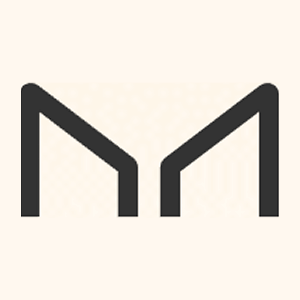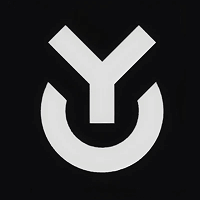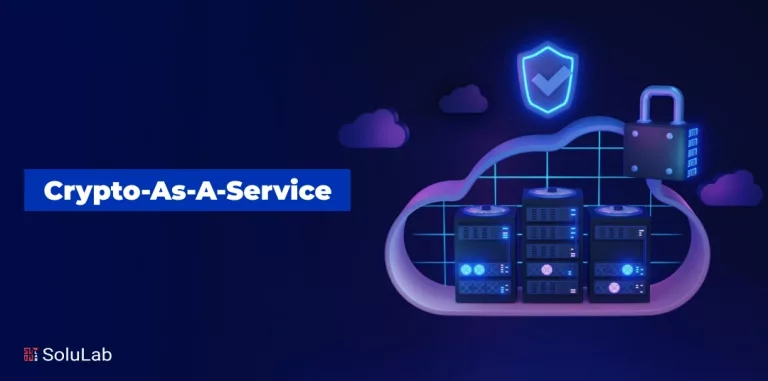Traditional centralized exchanges control your funds, impose hefty fees, and can freeze your assets without warning. Many traders face limited access to emerging tokens, geographic restrictions, and the constant risk of exchange hacks that have cost investors billions.
Every day you stick with centralized platforms, you’re paying unnecessary fees, missing out on early-stage DeFi opportunities, and risking your crypto.
Decentralized exchanges (DEXs) put you back in control of your assets while offering lower fees, global accessibility, and access to thousands of tokens unavailable on traditional platforms.
This guide reveals the top 10 DeFi exchanges to look for when planning yours in 2025, including key features, things to consider before selecting any platform. Let’s get started!
What is DeFi Exchange?
A DeFi (Decentralized Finance) Exchange, also known as a DEX (Decentralized Exchange), is a platform where users can trade cryptocurrencies without a central intermediary, like a traditional exchange. DeFi exchanges use smart contracts on blockchains to automate trading and allow users to connect directly with each other, eliminating the need for a middleman.
Read Our Blog Post: How to Build Your Own DEX Like Aster
Key Features of The Best DeFi Exchanges
Decentralized Finance (DeFi) exchanges are a type of cryptocurrency exchange that operate on blockchain technology and aim to provide users with more control, transparency, and autonomy over their financial transactions. Here are some key characteristics of DeFi exchanges:
- Decentralization: DeFi exchanges are decentralized in nature, meaning they don’t rely on a single central authority to manage transactions or hold user funds. Instead, they utilize smart contracts on blockchain networks like Ethereum to automate trading and asset management.
- Non-Custodial: In a DeFi exchange, users retain control of their private keys and funds. This eliminates the need to trust a third party with custody of assets, reducing counterparty risk associated with centralized exchanges.
- Peer-to-Peer Trading: DeFi exchanges enable users to trade directly with one another without intermediaries. This creates a more direct and transparent trading process.
- Automated Market Making: Many DeFi exchanges employ automated market maker (AMM) protocols. These protocols use liquidity pools, where users contribute their funds, enabling instant trades and price discovery without relying on traditional order books.
- Access to Diverse Assets: DeFi exchanges typically support a wide range of tokens and assets, beyond the major cryptocurrencies. This enables users to trade a variety of tokens and engage in unique investment strategies.
- Programmability: Smart contracts on DeFi exchanges can be programmed to execute various functions automatically, such as providing liquidity, distributing rewards, and executing complex trading strategies.
It’s important to note that while DeFi exchanges offer numerous advantages, they also come with certain risks, including smart contract vulnerabilities, liquidity risks, and regulatory uncertainties. As the DeFi space evolves, users should exercise caution, conduct thorough research, and stay informed about potential risks before participating in DeFi exchanges.
Things to Keep in Mind while Selecting a DeFi Exchange
By staying informed and adopting best security practices, you can enjoy the benefits of cryptocurrencies while ensuring the safety of your investments in this dynamic and exciting financial landscape. Some key factors to keep in mind include:
- Security and Audits: Security is the cornerstone of any leading DeFi exchange. Look for platforms that prioritize security by conducting thorough smart contract audits performed by reputable third-party firms. These audits help identify vulnerabilities and ensure the platform’s integrity. Prioritize exchanges that have a history of proactive security measures and prompt response to potential threats.
- User Interface and Experience: An intuitive and user-friendly interface is crucial for a smooth trading experience. A well-designed platform enhances your ability to navigate through the exchange, execute trades, and manage your portfolio effectively. Prioritize platforms that prioritize user experience and provide clear, concise, and user-friendly interfaces.
- Supported Tokens and Pairs: The availability of a wide range of supported tokens and trading pairs is essential. A diverse selection allows you to engage in various trading strategies and seize emerging opportunities within the DeFi space. Ensure that the exchange supports the specific assets you’re interested in trading.
- Liquidity and Trading Volume: High liquidity and trading volume are indicative of a healthy trading environment. These factors lead to tighter spreads, faster order execution, and a more seamless trading experience. Opt for exchanges with strong liquidity and active trading activity to minimize slippage and maximize your trading potential.
- Fees and Costs: Understanding the fee structure is critical to managing your trading costs. Be aware of trading fees, withdrawal fees, and gas fees (transaction fees on blockchain networks). Compare fees across different exchanges to ensure that you’re getting competitive rates that align with your trading frequency and volume.
- User-Friendly Interface: The wallet’s user interface should be intuitive and easy to navigate, especially for beginners. Complicated interfaces might lead to mistakes that could compromise the security of your funds.
- Reputation and Reviews: Research the exchange’s reputation within the DeFi community. Seek out user reviews, testimonials, and feedback to gain insights into the experiences of other traders. Positive feedback indicates reliability, while negative feedback can highlight potential issues or challenges.
- Customer Support: Quality customer support is vital for resolving issues and addressing inquiries promptly. Prioritize exchanges with responsive customer support channels that can provide assistance in a timely manner. This ensures that you have a reliable source of help whenever you encounter challenges.
- Privacy and KYC: Decide whether you value privacy or are comfortable with Know Your Customer (KYC) verification. Some DeFi exchanges require identity verification, while others respect user privacy. Choose from the best DeFi exchanges that aligns with your preferences regarding the level of personal information you’re comfortable sharing.
- Regulation and Legal Compliance: Research the exchange’s reputation within the DeFi trends. Understand the regulatory environment in which the exchange operates. Ensure that the platform complies with relevant laws and regulations, reducing potential legal risks for both the exchange and its users.
Here are the Top 10 DeFi Exchanges in 2025.

1. Uniswap
One of the top decentralized exchanges (DEXs) based on the Ethereum network is Uniswap. Without using middlemen, it enables users to exchange ERC-20 tokens straight from their wallets. Continuous liquidity is guaranteed by Uniswap's automated market-making (AMM) model, which makes use of reserves rather than order books. The DeFi community as a whole has accepted this idea.
Key features include a user interface that is easy to use and intuitive, as well as support for numerous tokens, low slippage, and high liquidity.

2. SushiSwap
SushiSwap is a popular decentralized exchange (DEX) that runs on multiple blockchains, offering users the ability to swap tokens, earn rewards, and participate in yield farming—all without a middleman.
Known for its community-driven approach, SushiSwap has evolved from a simple Uniswap fork into a full-fledged DeFi ecosystem with lending, staking, and cross-chain swaps. SushiSwap works across Ethereum, Arbitrum, Polygon, and more, and earns rewards by providing liquidity. Also, token holders vote on platform upgrades.

3. PancakeSwap
PancakeSwap is a decentralized exchange (DEX) built on the BNB Smart Chain. It allows users to swap BEP-20 tokens with low fees, making it ideal for retail traders and DeFi beginners. PancakeSwap uses an automated market maker (AMM) model and offers liquidity pools for earning passive income.
It supports yield farming, staking through Syrup Pools, lottery games, and even NFT trading. With its user-friendly interface, fast transactions, and low gas fees compared to Ethereum-based DEXs, PancakeSwap continues to be a go-to choice for DeFi enthusiasts in 2025.

4. Curve Finance
Curve Finance is a decentralized exchange (DEX) designed specifically for stablecoin trading and low-slippage swaps. Launched in 2020, Curve has become a go-to platform for users looking to trade stable assets with minimal fees and high efficiency. Its unique market-making algorithm focuses on providing deep liquidity for similar-priced tokens.
Some key features of Curve include its AMM model optimized for stablecoins, support for yield farming through Curve DAO, and integration with other DeFi protocols. Benefits include reduced impermanent loss, efficient stablecoin trades, and the opportunity to earn CRV tokens for liquidity provision.

5. Aave
Aave is a leading lending and borrowing decentralized finance (DeFi) platform that allows users to lend and borrow cryptocurrencies without intermediaries. Built on the Ethereum blockchain, Aave enables users to earn interest on deposits and borrow assets against collateral in a secure, transparent way.
The platform’s non-custodial nature ensures full control of funds, making it a popular choice for DeFi users. Aave stands out for its flexibility, innovation, and user-friendly experience.

6. Compound Finance
Compound Finance is a leading decentralized lending platform. Users can earn interest on their crypto assets or borrow against them without intermediaries. Built on Ethereum, it automates the process using smart contracts, making borrowing and lending seamless and secure. Compound has become a key player in the DeFi space thanks to its transparency, ease of use, and community governance.
Compound supports a wide range of tokens like ETH, USDC, and DAI, offering variable interest rates based on supply and demand. Users retain full control of their funds, with no lock-in periods. Its governance model empowers token holders (COMP) to propose and vote on protocol changes, ensuring decentralization and community involvement.

7. Balancer
Balancer is a decentralized exchange and automated portfolio manager built on Ethereum. Unlike traditional DEXs, it allows users to create self-balancing liquidity pools with up to 8 different tokens in custom ratios. Known for its flexibility, Balancer empowers both traders and liquidity providers with more control and efficiency.
It offers customizable AMM pools, low slippage trades, and supports multi-asset liquidity. Liquidity providers earn fees and can create smart pools with dynamic parameters. Balancer’s innovative model makes it ideal for advanced DeFi strategies and efficient capital deployment.

8. Maker DAO
MakerDAO is the protocol behind DAI, a stablecoin pegged to the US dollar. Unlike traditional stablecoins, DAI is fully decentralized and collateralized by various assets deposited into the Maker Vaults. Users can generate DAI by locking up assets like ETH as collateral.
The protocol's primary innovation lies in providing a stable and decentralized currency through DAI, which maintains its dollar peg without relying on centralized entities. The system operates through collateralized debt positions (CDPs) that enable users to obtain asset-backed loans by depositing cryptocurrency as collateral.

9. Yearn Finance
Yearn Finance is a decentralized finance protocol that operates as a yield optimizer, automatically moving funds around the DeFi ecosystem to generate high returns for users. The platform functions like crypto savings accounts in cyberspace, where users deposit their assets and Yearn puts them to work within the DeFi ecosystem, returning earned yield to depositors.
Yearn Finance's flagship product is its Vaults system, which revolutionizes yield farming by offering automated, risk-adjusted returns. Yearn Vaults aim to automate the process of yield farming, reducing complexity into simple deposit or withdrawal transactions, functioning like passive investing for yield farming

10. Synthetix
Synthetix stands as the backbone for derivatives trading in DeFi, providing liquidity for permissionless derivatives like perpetual futures, options, and parimutuel markets across EVM chains. The platform allows anyone, anywhere, to gain on-chain exposure to a vast range of synthetic assets.
Synthetix offers exposure to a wide range of assets without leaving the blockchain. High liquidity and low slippage for trading Synths. Innovative platform with ongoing development.
Final Words
The DeFi exchange in 2025 continues to grow rapidly, offering traders unprecedented opportunities for decentralized trading. From established giants like Uniswap and PancakeSwap to innovative newcomers, these platforms provide enhanced liquidity, cross-chain compatibility, and user-friendly interfaces.
As institutional adoption accelerates and traditional financial institutions recognize DeFi benefits, the sector is poised for significant growth. When selecting a DeFi exchange, prioritize security, liquidity depth, supported networks, and fee structures that align with your trading strategy.
Contact SoluLab, a leading DeFi development company in the USA, to discuss your project requirements and grow your business.

FAQs
1. How is a DeFi exchange different from a traditional centralized exchange (CEX)?
Unlike centralized exchanges (like Binance or Coinbase), DeFi exchanges operate without middlemen. Users retain control of their funds and trade directly through smart contracts. This eliminates the need to trust a third party with your assets.
2. Do I need a special wallet to use DeFi exchanges?
You’ll need a Web3-compatible wallet like MetaMask, Trust Wallet, or Coinbase Wallet. These wallets let you connect directly to DeFi exchanges and execute trades while maintaining control over your funds.
3. Can I earn passive income on DeFi exchanges?
Yes. Many DeFi platforms offer opportunities like liquidity provision, staking, or yield farming, allowing users to earn rewards or interest on their crypto holdings.
4. Are there any fees involved in using DeFi exchanges?
Yes. Users typically pay network (gas) fees for transactions, and some platforms may charge trading or liquidity provider fees. These fees vary by blockchain and platform.
5. How do I get started with SoluLab for DeFi exchange development?
Getting started with SoluLab is simple! Begin by reaching out through our contact form or scheduling a free consultation with our blockchain experts. We’ll discuss your project goals, technical requirements, and user needs to create a customized roadmap.




